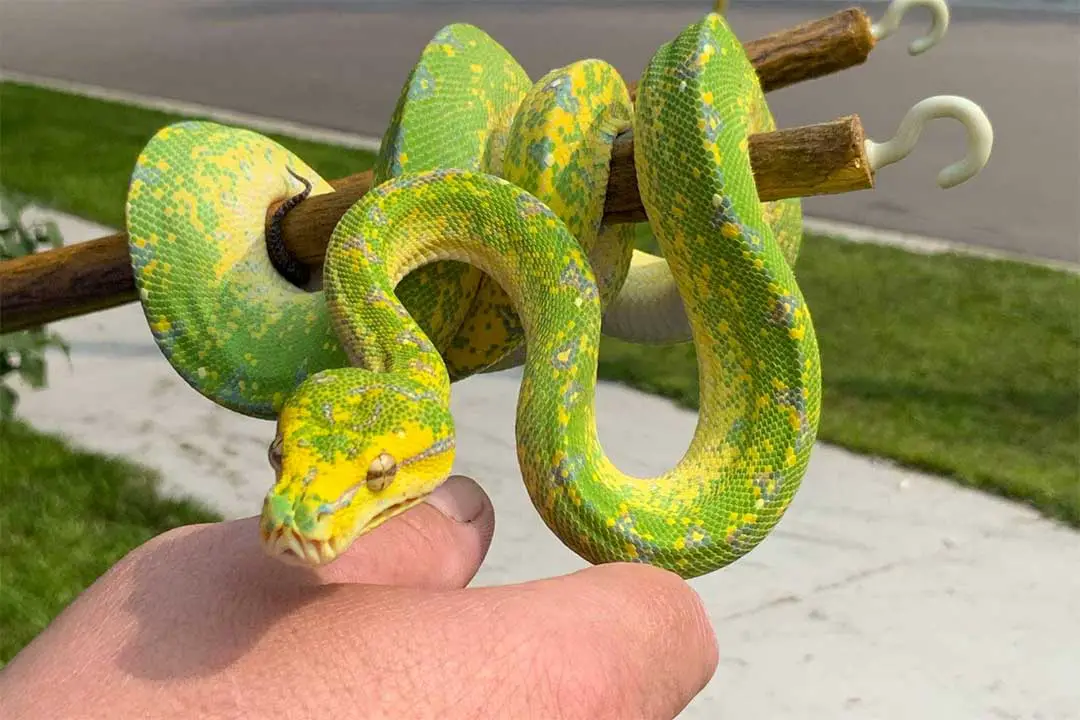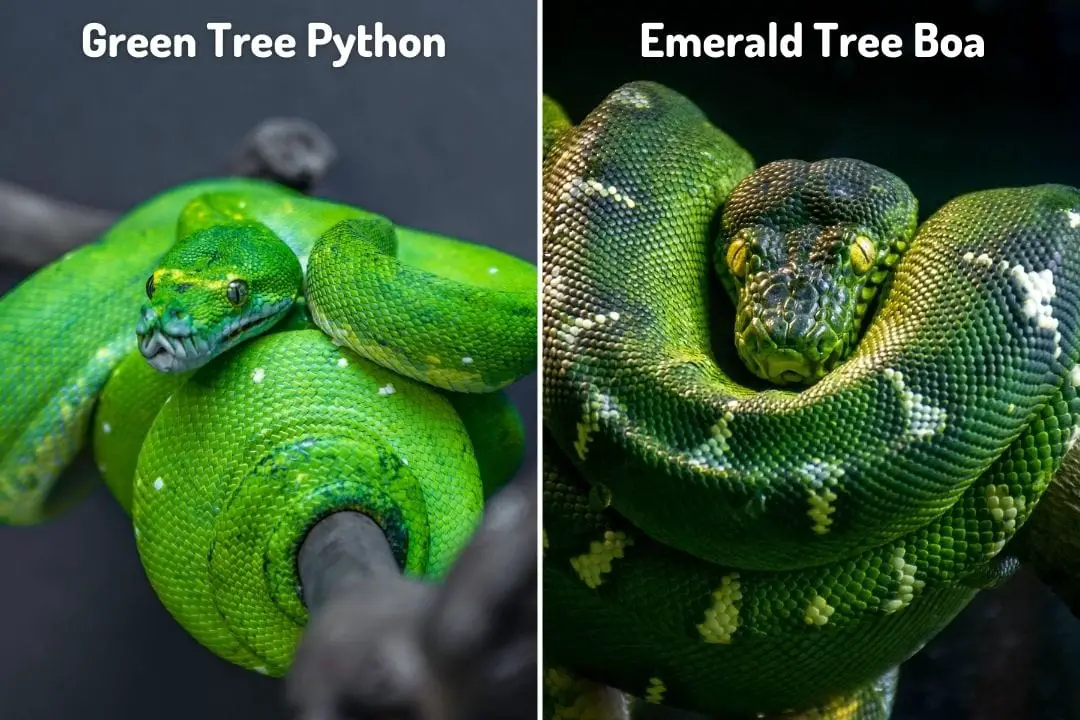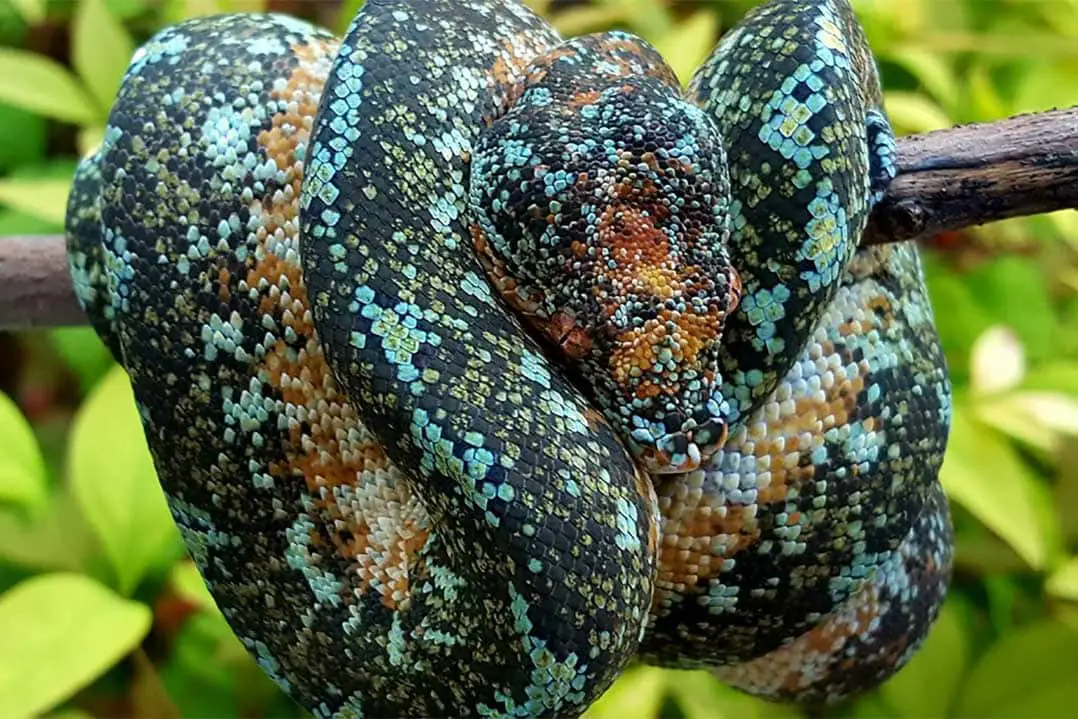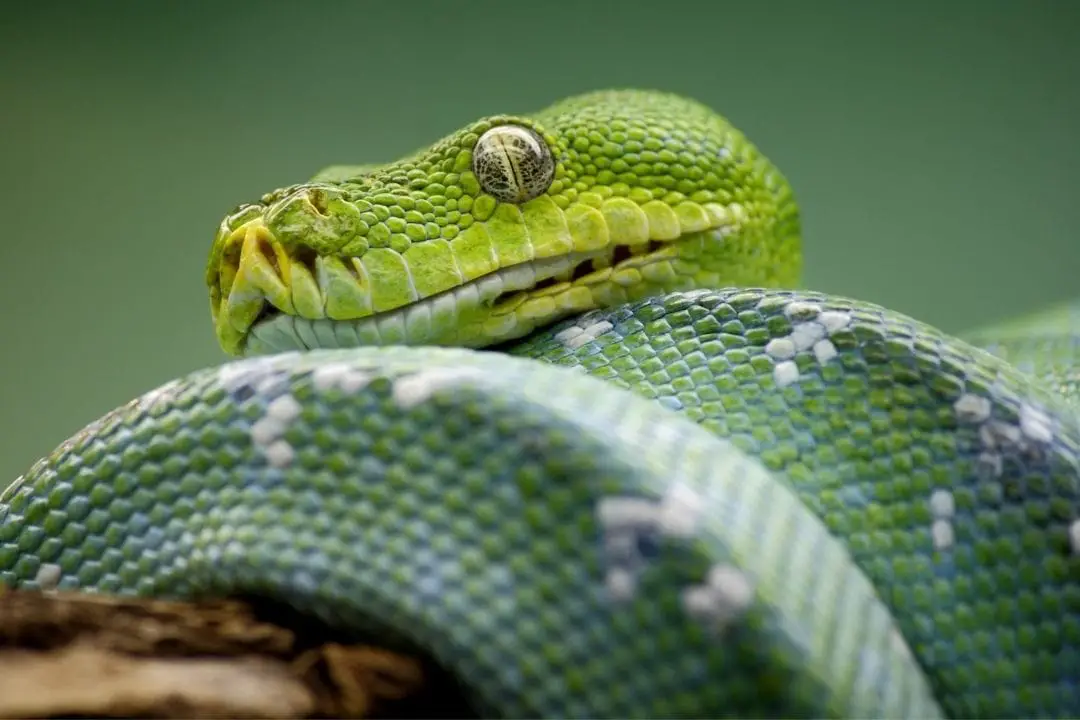The green tree python (Morelia viridis) is a beautiful arboreal snake. These animals are becoming more popular as display snakes. Green tree pythons do not typically like much handling, but you may need to handle them at some point. Here is how to do so safely.
As a general rule, you should let the snake come to you. Encourage it to leave the perch and choose your arm or hand as a perch instead.
Important Background Information
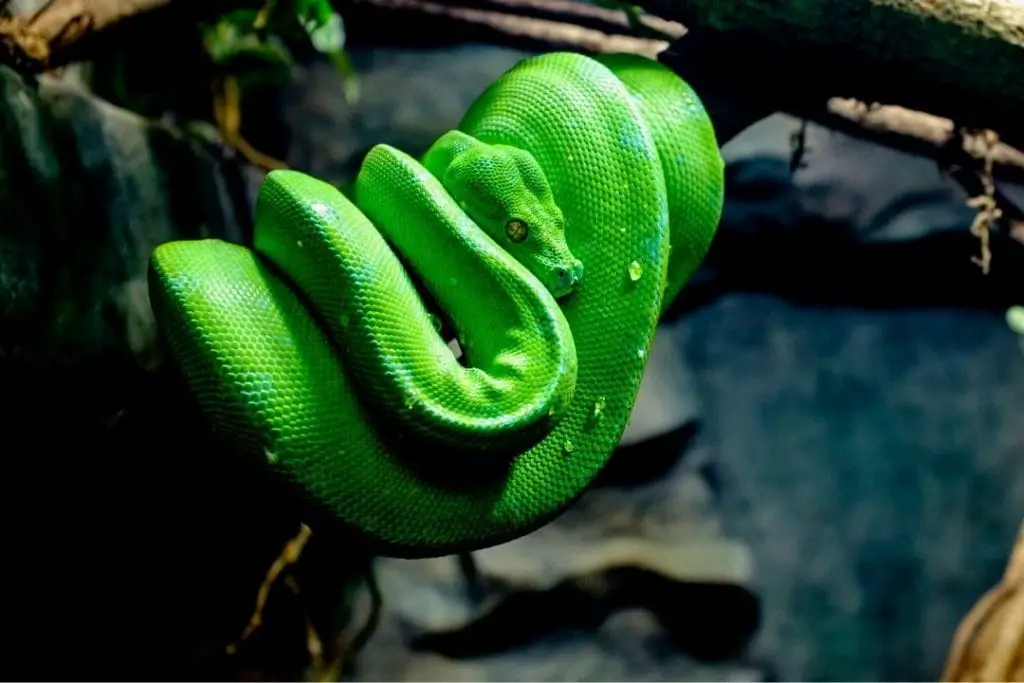
Green tree pythons typically rest on a thick branch. They loop over the branch and their head will rest in the center. This is also their hunting posture. They can be defensive in this posture.
This is very true if they are hoping for a meal. Juveniles under a year old hunt more often during the day and evening, while adults look for food at night almost exclusively.
Trying to lift them off a perch can result in a strike. It is best to have removable perches so you can take the perch out of the enclosure. Like all snakes, green tree pythons are typically less likely to strike outside of their enclosure. You should also aim to handle your snake when it is sleeping or resting.
This means it is likely not looking for a meal and will not be likely to bite unless you scare it. Another important fact is that green tree pythons have very delicate tails.
Never grab your snake by the tail or you may break it.
You shouldn’t grab your snake in general since snakes panic when restrained, but grabbing a green tree python’s tail is absolutely off limits unless you want to take your snake for an emergency vet visit.
You should also avoid approaching the snake’s head or reaching at it from above. Both of these indicate you are a threat and your snake will try to defend itself.
Here is how to handle a green tree python:
Step 1. Pick the right time
You should be sure to try to handle your snake when it has eaten recently or is in shed. Since snakes don’t have eyelids, your green tree python has a scale called a spectacle or eye cap. This protects the eye and helps keep it moist. This is shed with the rest of the skin.
Part of shedding is a build-up of fluid to separate the old layer of skin from the new. This fluid makes it hard for your snake to see and it will be more easily startled and defensive. The process also seems to be uncomfortable for snakes, so it may be grouchy.
The best time to handle your green tree python is a few days after a meal, during the time your snake normally sleeps. Watch for your snake to be still and breathe slowly.
If you open the enclosure or come close, the snake will also not look at you. This is a sign your snake is sleeping.
Step 2. Pick Up the Snake
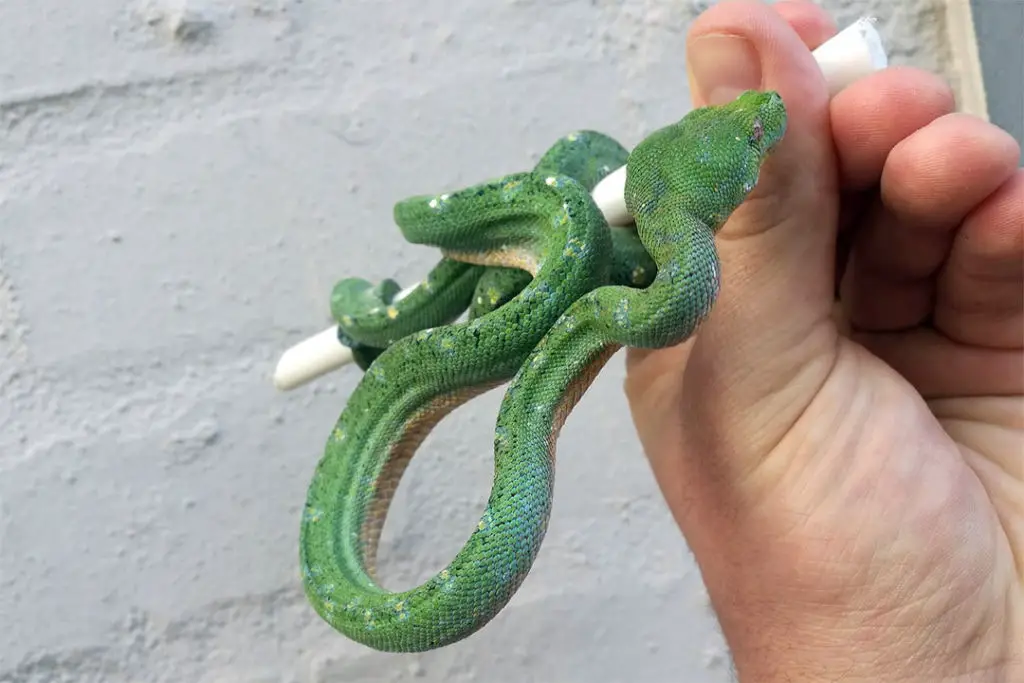
A removable perch will make the process much easier. You can just take out the whole perch with the snake on it. Make sure the snake isn’t completely asleep and knows you are there before you take it out.
This will help make sure your snake is calm. If you do not have a removable perch or the snake is not on it, you can try to remove it by approaching from below. Be confident when handling, you may want to use gloves to help you. Try to lift off a loop and encourage the snake to move to your arm.
If the snake approaches you, it will likely not bite. When you are trying to move your snake or convince it to switch perches, stroking the back half of the snake can encourage it to move.
Watch the body language of your pet the whole time you are interacting with it. Look for any signs of hissing, puffing, or curling up to strike. Green tree pythons will signal if they are upset. Keep the head away from your body and allow the snake to approach you.
Step 3. Off the Perch
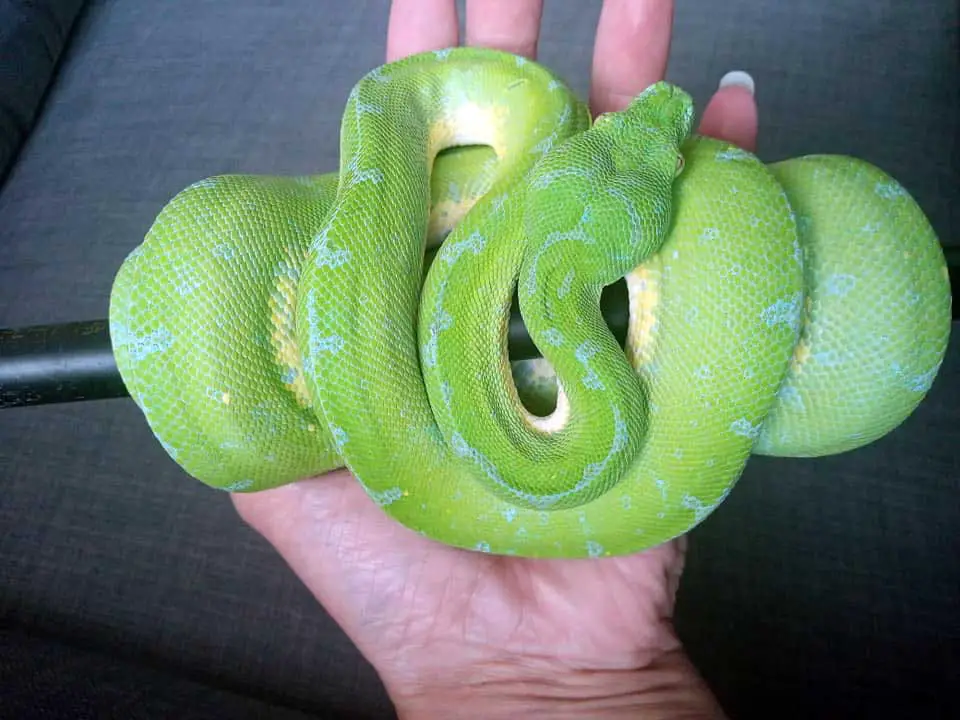
Once you have your snake out of the enclosure, you need to get it off the perch. If you have a removable perch, you can very gently rotate the perch to loosen the snake.
You can also place your hand under a cool and try to lift it a bit. This and stroking the last half of the animal can help encourage it to leave.
A new snake or one that has had bad experiences with humans may be more reluctant to come off the perch. Be gentle and patient. Move slowly and smoothly. Encourage the snake to get on your hand or arm. Once it is off, set down the perch so you have both hands free.
Step 4. Handling
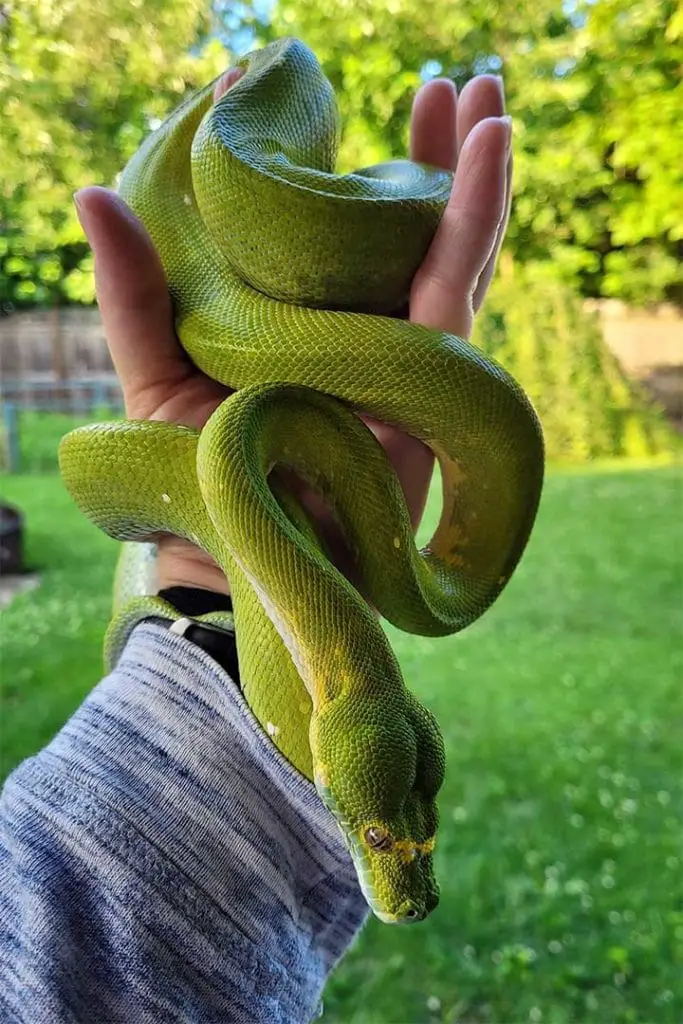
Once your snake is out, watch for body language. You can use your hands to gently guide the snake away from your body if it may still bite. Always bring your hand under the snake and allow it to move around and explore. Keep handling sessions very brief at first, under 5 minutes. Try to end sessions before your snake becomes stressed. Shorter handling sessions where the snake feels safe build trust faster than longer sessions. If your green tree python does bite, handle it for a bit longer so it doesn’t learn that biting gets it returned to the enclosure faster.
Step 5. Return the Snake
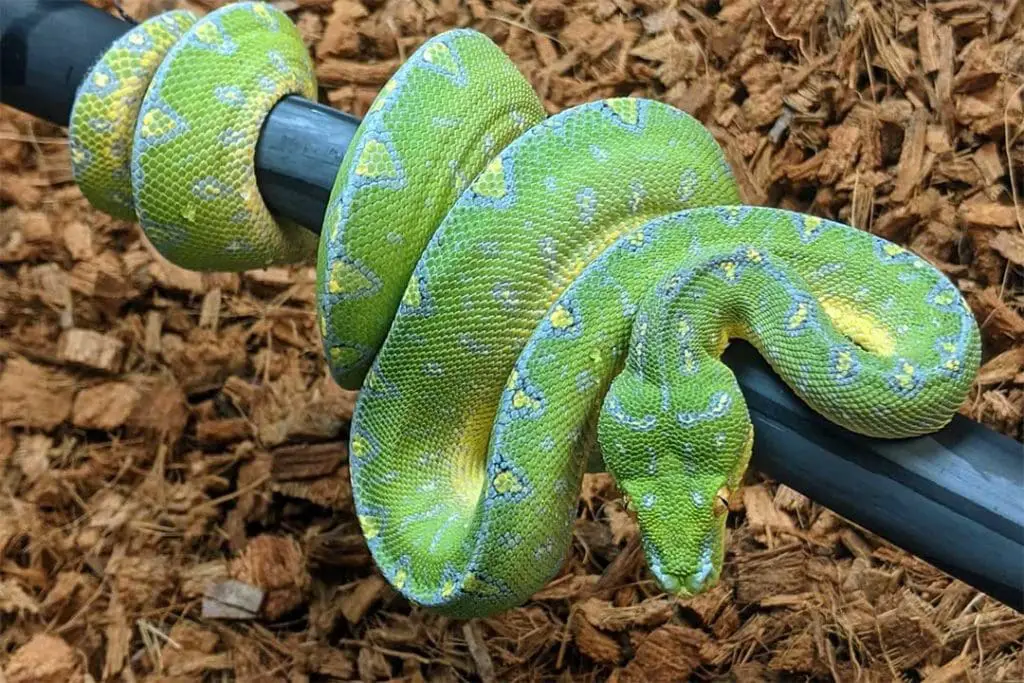
After a handling session, you need to put your snake back. If you have multiple perches, you can just bring your snake up to one of them.
If it doesn’t want to climb on the new perch, you can repeat the stroking the body trick to get it to move. If you only have the one removable perch, you can try to get your snake to climb on and put it back, or do it one handed. You can also see if the snake will climb in the enclosure. Be gentle and very careful with the tail.
Conclusion
Green tree pythons can be a bit hard to handle, but patience and understanding the species helps. If you have any questions or comments, please leave them below.
